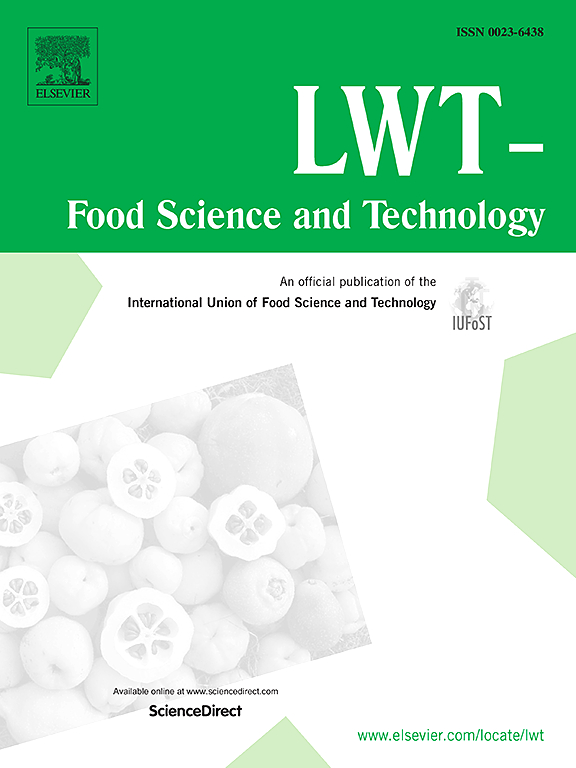Study on collagenolytic mechanism of endogenous matrix metalloproteinase-2 in grass carp (Ctenopharyngodon idella)
IF 6
1区 农林科学
Q1 FOOD SCIENCE & TECHNOLOGY
引用次数: 0
Abstract
Texture is an important characteristic for fishery products, influencing quality classification and commercial value. Matrix metalloproteinases (MMPs) are deemed to participate in collagenolysis of postmortem fish flesh, whereas its mechanism is still unclear. This study revealed that a 66 kDa enzyme with gelatinolytic activity was separated from grass carp (Ctenopharyngodon idella) by ammonium sulfate precipitation technique and column chromatographic method, and identified as MMP-2 by liquid chromatography coupled with mass spectrometry analysis. In vitro experiments revealed that some collagen fibril bundles and individual fibrils were disintegrated from collagen fibers after digestion of MMP-2 for 48 h, along with a release of pyridinium cross-links (19.99 ± 1.02 %), hydroxyproline (15.04 ± 0.03 %) and glycosaminoglycan (11.21 ± 0.03 %). Meanwhile, MMP-2 treated samples mostly remained the triple-helical domain of collagen after treatment for 48 h, whereas their thermal stability was reduced. Furthermore, collagen fibers with high-level structures were more resistant to hydrolysis than collagen monomer and gelatin. All bands of gelatin and 90 % of collagen monomer were digested in 45 min and 4 h respectively. All these results suggested that MMP-2 might take part in the breakdown of collagen fibers by the destruction of cross-links, and the degradation of collagen molecules and proteoglycans in textural deterioration of refrigerated grass carp.
求助全文
约1分钟内获得全文
求助全文
来源期刊

LWT - Food Science and Technology
工程技术-食品科技
CiteScore
11.80
自引率
6.70%
发文量
1724
审稿时长
65 days
期刊介绍:
LWT - Food Science and Technology is an international journal that publishes innovative papers in the fields of food chemistry, biochemistry, microbiology, technology and nutrition. The work described should be innovative either in the approach or in the methods used. The significance of the results either for the science community or for the food industry must also be specified. Contributions written in English are welcomed in the form of review articles, short reviews, research papers, and research notes. Papers featuring animal trials and cell cultures are outside the scope of the journal and will not be considered for publication.
 求助内容:
求助内容: 应助结果提醒方式:
应助结果提醒方式:


